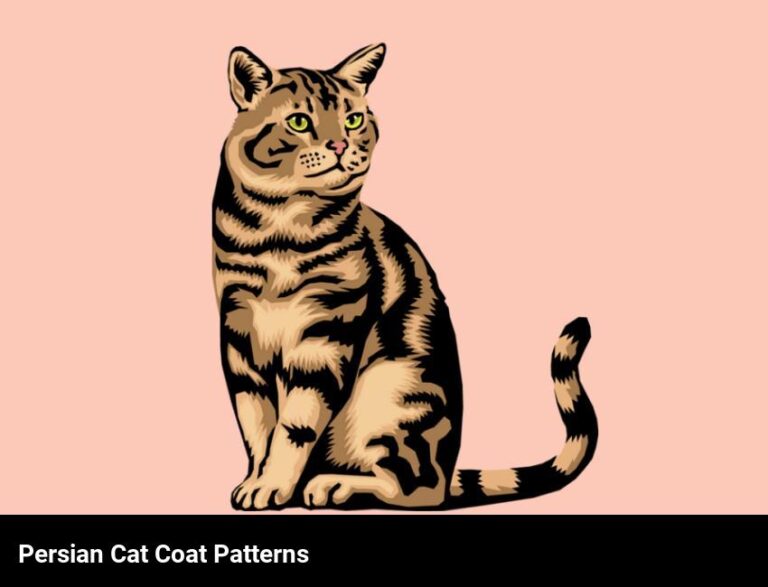Understanding The Rarity Of Blue Persian Cats
Blue Persian cats are rare. They are a breed that is not commonly seen and are usually only found in certain parts of the world.
As a cat lover, I’ve always been fascinated by the unique beauty of Blue Persian cats. For me, it’s like stepping into a dream when I see one – their soft, silvery-blue coats and big, expressive eyes make them look like creatures from another world. But what really sets Blue Persian cats apart from other cats is how incredibly rare they are.
I’ve been researching the history of Blue Persian cats, as well as their unique characteristics, and I’m excited to share what I’ve learned with other cat lovers. I’ll explain why Blue Persian cats are so rare and what makes them special. I’ll also discuss how you can tell if a Blue Persian cat is purebred, as well as potential health concerns and the cost of owning one.
What makes blue persian cats so rare?
Are you fascinated by the coveted Blue Persian cat? Many cat lovers are, and for good reason. These cats are not only beautiful, but also quite rare. So what makes them so rare?
To begin, the Blue Persian cat is a specific breed of cat. It has a specific set of characteristics and qualities that set it apart from other cats. One of the most prominent characteristics of this breed is its beautiful blue fur, which is the result of a genetic mutation.
In addition to this mutation, Blue Persian cats are also very difficult to breed. This is because the breeders must ensure that both parents have the same mutation, or else their kittens won’t have the same beautiful blue fur. This makes it difficult to find two cats of the same breed with the same mutation, which is why Blue Persian cats are so rare.
Another factor that contributes to their rarity is their popularity. This breed of cat is so highly sought-after that it is often difficult to find one for sale. This is because many people are willing to pay top dollar for a Blue Persian cat, making them quite a valuable commodity.
All in all, the Blue Persian cat is a rare and beautiful breed of cat. Its striking blue fur and its difficulty to breed are what make it so special and sought-after. If you’re lucky enough to find one of these cats, you’ll have a truly unique and beautiful addition to your family.
How do blue persian cats differ from other cats?
You’ve probably seen the distinctive features of a Blue Persian cat with its long, plush coat and its sweet, round face – but what else makes this breed of cat so unique? Here are some of the ways that Blue Persians differ from other cats:
- Color: Blue Persians have a unique shade of blue-gray fur that sets them apart from other cats. This is caused by a recessive gene in the breed that produces a diluted black color.
- Size: Blue Persians are known for having shorter legs than other cats, giving them a more compact and round body. Their long, thick fur also makes them appear bigger than they actually are.
- Temperament: Blue Persians are known for being gentle and affectionate. They tend to be quite playful, but they have a calmer demeanor than other cats.
- Health: Blue Persians have a lower risk of developing certain health issues than other cats, such as obesity and skin diseases.
- Lifespan: Blue Persians have an average lifespan of around 15 years, which is slightly longer than other breeds of cats.
Overall, Blue Persian cats are a unique breed that stands out from other cats in many ways. With their distinctive color, size, temperament, and health, they make an excellent companion for any cat lover.
What unique characteristics do these cats possess?
Blue Persian cats are truly unique and their rarity only adds to their charm. Firstly, these cats are known for their luxurious blue-tinted fur. This unique feature is due to a particular gene mutation and makes them stand out from other Persian cats. Secondly, Blue Persian cats are known for their gentle and loving personalities. They are intelligent, affectionate and loyal companions, and also very playful. Finally, these cats are often described as having a “plush” or “velvety” coat, with a soft texture and an easy-to-maintain sheen. Their coats shimmer in the light and they have a unique and beautiful look.
To sum up, the uniqueness of Blue Persian cats lies in their luxurious blue-tinted fur, their gentle and loving personalities, and their plush coats. All these features contribute to making these cats a rare find, and a true delight to own.
What is the history of blue persian cats?
Blue Persian cats have been around since the mid-1800s! Originally, they were bred in Persia (now Iran) and were considered to be a symbol of status. They were highly sought-after by royalty, and soon spread to other parts of Asia.
In the early 1900s, the breed began to be exported to Europe and the United States, where they quickly became popular for their striking blue fur. Blue Persians were also prized for their sweet and gentle nature, which made them ideal companions for families.
In the 1940s, breeders began experimenting with different coat colors and patterns, resulting in a wider variety of Persian cats. This included the creation of the blue-eyed white Persian, which is now one of the most popular varieties of Persian cats.
Over the past few decades, the popularity of Blue Persian cats has grown significantly. Today, they are one of the most sought-after cats in the world and can be found in homes across the globe.
How can you tell if a blue persian cat is purebred?
If you’re looking to buy a Blue Persian cat, you’ll want to make sure it is indeed a purebred. The key to identifying a purebred Blue Persian cat lies in its physical characteristics, pedigree, and registration with a recognized cat registry.
Look for physical characteristics that are exclusive to Blue Persian cats. They should have a round head, a short muzzle, round eyes, and a thick and long coat. The fur should have a distinct blue hue and the skin underneath should be white. A Blue Persian cat should also have a flat face and short legs.
If you can get the cat’s pedigree, it’s a great indication that it is indeed a purebred. Because Blue Persian cats are so rare, they are often inbred, which can affect their health. So make sure to review the cat’s pedigree and research the breeder to make sure that the cat is coming from a healthy breeding line.
Lastly, you’ll want to check the cat’s registration with a recognized cat registry. Reputable registries will have strict standards for registering Blue Persian cats, so if the cat is registered with one, it’s a good indication that it is indeed a purebred.
In summary, you can tell if a Blue Persian cat is purebred by looking for physical characteristics exclusive to Blue Persian cats, reviewing the cat’s pedigree, and checking the cat’s registration with a recognized cat registry. Taking these steps will ensure that you are getting a true Blue Persian cat.
What health concerns should owners of blue persian cats be aware of?
If you own a Blue Persian cat, you should be aware of a few potential health concerns. First, Blue Persians often exhibit brachycephalic syndrome, a condition that can affect breathing and airways. These cats may also be prone to dental issues, as their flat faces make it difficult for them to keep their teeth clean. Finally, they may be more prone to obesity due to their sedentary lifestyle.
Fortunately, these health concerns can be managed with regular veterinary visits. This includes monitoring their weight and providing dental care, as well as making sure they get regular exercise. Additionally, make sure to provide a nutritious diet to help them reach and maintain a healthy weight.
Owning a Blue Persian is certainly a unique experience, and it is important to be aware of potential health concerns when caring for these rare cats. With proper management and regular vet visits, you will be able to ensure your Blue Persian is healthy and happy.
Are blue persian cats more expensive than other breeds of cats?
Yes, Blue Persian cats are more expensive than other breeds of cats. This is because they are an incredibly rare breed of cat, with the beautiful blue fur and gentle disposition they are highly sought after.
The rarity of the Blue Persian cat is due to their unique gene pool. The gene pool is relatively closed, meaning that their numbers are kept low and controlled. This means that to come across a Blue Persian cat is an incredibly rare occurrence.
The cost of a Blue Persian cat also varies due to the demand for the breed. As demand increases, so does the cost. This means that if you do manage to purchase a Blue Persian cat, you can expect to pay a premium price.
The rarity of the Blue Persian cat is something that has to be taken into consideration when looking for a pet. They are not for everyone, as they need a lot of attention and care. However, if you are looking for an incredibly rare and beautiful cat, the Blue Persian may be the perfect fit for you.

Frequently Asked Questions
What makes blue persian cats so special?
Blue Persian cats are special due to their gorgeous blue fur and striking green eyes. They’re a rare breed and highly sought after which adds to their value. Their long, luxurious fur is a beautiful hue of blue that stands out. Plus, their eyes are a stunning green that makes them stand out even more. All of these features together make them a one-of-a-kind cat.
What are some of the challenges of owning a blue persian cat?
Owning a blue Persian cat can be a rewarding experience, but it also comes with some challenges. These cats require frequent grooming, as their long coats get matted easily. Blue Persians are also prone to tear staining, so they need regular eye cleaning. Additionally, they may be more susceptible to health issues due to their unique coloring. Finally, blue Persians are rare, so potential owners must be willing to wait for one to be available.
Are there any particular health issues associated with blue persian cats?
Yes, there are some health issues associated with blue Persian cats. These cats are known to be prone to respiratory problems, as well as eye and skin conditions. Blue Persian cats are also at risk for heart disease, dental problems, and liver issues. To ensure their health, it’s important to provide them with regular vet checkups and a healthy diet.
What makes the blue persian cat’s coat so unique?
The unique coat of the blue Persian cat is a result of a recessive gene that produces a gray-blue hue. This hue is incredibly rare, and is not seen in any other breed of cat. The color is generally uniform throughout their body and is typically accompanied by a silver-tipped guard coat. This combination of features gives the blue Persian cat a stunningly beautiful and eye-catching appearance.







